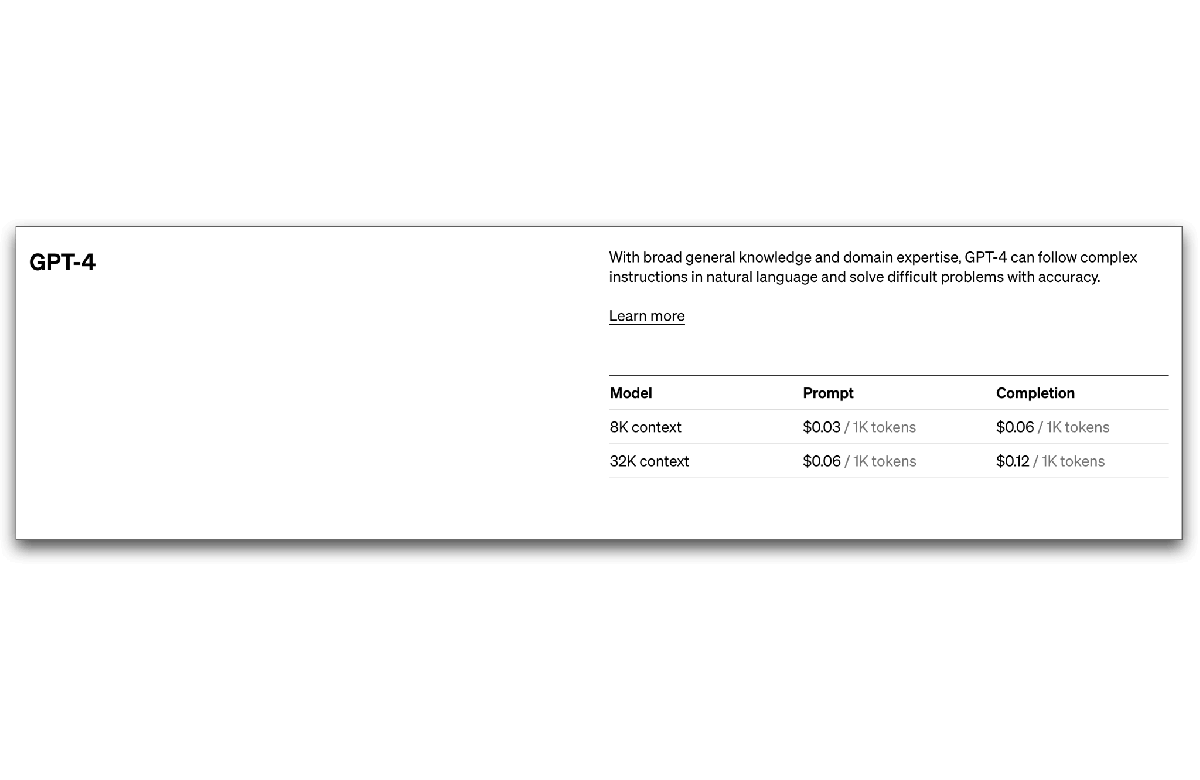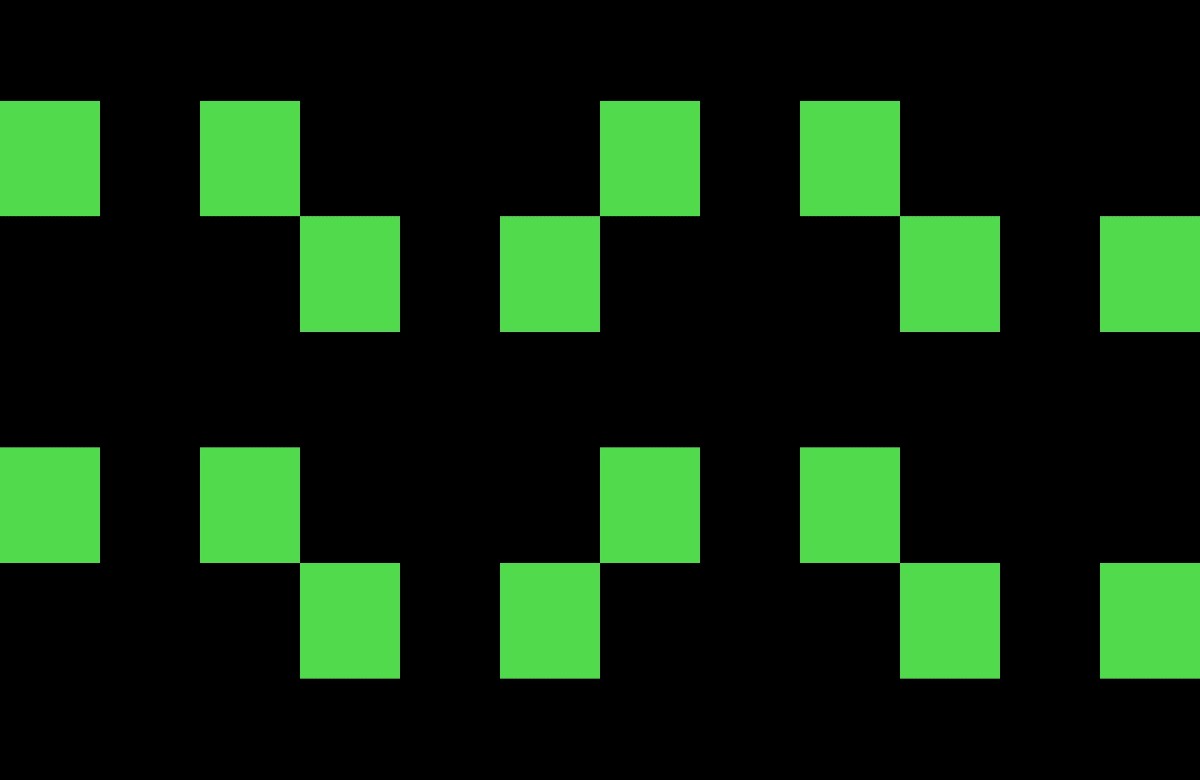ChatGPT Plus users are restricted to a basic version of GPT-4, while those wanting access to the most up-to-date version through ChatGPT API must join a waitlist. But that comes with a price as well.
If you want to know the cost of ChatGPT API, how to sign up, and what each subscription contains, this article has it all covered! Let’s dive in!
How Much Does Chat GPT-4 API Cost?
The Chat GPT-4 API offers different pricing plans based on the type of model you choose and the number of tokens you use. Tokens are individual words used to generate NLP results, and each token typically consists of around four characters (or 0.75 words). Prices for these models are normally charged on a per thousand token bases. Here are some examples of the Chat GPT API pricing plans for different models:

GPT-4
The GPT-4 model provides you with exceptional natural language processing capabilities. It has over one trillion parameters. It can precisely understand complicated commands, recognize contexts, and solve difficult tasks. In terms of pricing, the GPT-4 API cost varies depending on the context size – starting at $0.03 per 1K tokens for an 8K context size and increasing up to $0.12 per 1K tokens for a 32K context size.
ChatGPT (GPT-3.5 Turbo)
This model has been specially developed to generate natural and compelling conversations. Its performance is quite similar to that of Instruct Davinci and is also available at a cost-effective rate. The GPT-3.5 Turbo API only costs $0.002 per 1K tokens.
Joining the waitlist is the only way to access these models through the Chat GPT-4 API. However, if you want to access GPT-4 right away, you can use ChatGPT Plus for just $20 per month. Although, that comes with a limit of 100 messages every 4 hours.
In comparison, for the same amount of money, you can process 444k tokens (or 333k words) with GPT-4 – assuming equal distribution of prompt and completion tokens. In terms of cost, GPT-4 is 14x more expensive for prompts and 29x more expensive for completions compared to the ChatGPT API.
How to Join the GPT-4 API Waitlist?
The Chat GPT-4 API is currently in beta and not fully available to everyone yet. However, you can join the waitlist and get access when capacity is available. To join the waitlist, you need to have an OpenAI account and an organization ID. Here are the steps on how to join the GPT-4 API waitlist:

- Go to the OpenAI website and create an account if you don’t have one already. You will need to verify your phone number and agree to the terms of service and privacy policy.
- Next, head over to the platform page of OpenAI and log in with your account.
- You will see your organization ID in the top right corner when you click on settings. Copy your organization ID for later use.
- Now, go to the waitlist page of OpenAI and fill out a form with your details.
- Provide your first name, last name, email, company name, organization ID (that you copied earlier), and how you plan to use GPT-4.
- You can also share some specific ideas that you are excited to build with GPT-4.
- Click on Join waitlist and wait for confirmation.
- After joining the waitlist, you will be notified when the Chat GPT-4 API is available for you to use.
Note: You can increase your chances of getting access to GPT-4 API by contributing model evaluations to OpenAI Evals, a platform for automated evaluation of AI model performance.
Researchers studying the societal impact of AI or AI alignment issues can also apply for subsidized access via the OpenAI Researcher Access Program.
What are the Benefits and Features of the Chat GPT-4 API?
The GPT-4 API offers many benefits to developers and users of Natural Language Processing (NLP) applications and services. These advantages include:
- Visual input: It can process images and come up with captions, descriptions, or questions related to them. It works in 26 languages too.
- Longer input: It’s capable of handling more complex inputs and outputs so it can provide better answers.
- Advanced reasoning: GPT-4 has better general knowledge than its predecessors which allows it to solve more difficult problems accurately.
- Safety and alignment: This new model is less likely to say bad stuff and it’ll give more factual responses as well, thanks to OpenAI’s guidance.
- Models: There are many models you can choose from depending on your budget and needs. You can also customize some of them.
- Multi-tasking: GPT-4 works faster as it allows you to do multiple tasks at the same time.
What are the Differences Between ChatGPT API and ChatGPT Plus Subscription?
ChatGPT API and ChatGPT Plus are two separate services for accessing the ChatGPT models.
- In terms of access, ChatGPT API provides a way to use the models programmatically in your own applications or services; whereas with ChatGPT Plus you can only use it through its website on your browser.
- Availability-wise, ChatGPT API has higher uptime than the subscription-based ChatGPT Plus, which may be subject to occasional timeouts or availability issues.
- In terms of pricing, ChatGPT API is a pay-per-use model where you pay $0.002 per 1000 tokens (roughly 750 words) while ChatGPT Plus requires a fixed monthly fee of $20.
- Lastly, ChatGPT API offers access to GPT-4, with the option to fine-tune it for unlimited customizations; whereas ChatGPT Plus only offers a limited version of GPT-4 and runs primarily on GPT-3.5.
How to Use the Chat GPT-4 API for Your Projects and Applications?
To use the Chat GPT-4 API for your projects and applications, first you will need to get access to the API. Once you have been approved for access, here’s what you do:
- Open the platform page of OpenAI. Click on the top right corner, go to API Keys, and get your secret key.
- Refer to this page and choose the GPT-4 model you want to use.
- Send a request to the API endpoint – https://api.openai.com/v1/engines/{model}/completions with your secret key, prompt or context, parameters (such as max_tokens, temperature, frequency_penalty, etc.), and optional headers (such as Content-Type or Authorization).
- You’ll then receive a response from the API with a completion or an error message (refer to the link below if you get an error message).
- You can also use various tools and libraries to interact with the API more easily, such as Python SDK, Node.js SDK, Ruby SDK, Postman Collection, etc.
You can find more details about how to use the API here.
When Will the Chat GPT-4 API be Fully Available?
OpenAI has yet to reveal an exact date for when the GPT-4 API will be made available for public use. However, they’re actively working to make the Chat GPT-4 API available to as many developers and users as possible.
To do so, they are prioritizing access for developers who provide meaningful feedback on model evaluations via OpenAI Evals, while also offering access to researchers studying the implications of AI. Additionally, the 8K and 32K engines are also being distributed at varying rates depending on capacity.
Does the Chat GPT-4 API Support Multimodal Inputs and Outputs?
Yes, the Chat GPT-4 API is a multimodal model that can not only recognize textual data, but also images, audio, and video. With this API, you can direct the creation process by providing different types of content and by stating what kind of output you need.
For instance, you might use it to generate visuals, transcribe speech to text, convert languages into English or grasp and create code. This makes the Chat GPT-4 API a powerful and versatile tool for various applications and services.
Final Thoughts
Chat GPT-4 API is still in the early stages of development, but you can join the waiting list and gain access when capacity permits. The cost of using Chat GPT-4 API is flexible based on the model and token count you need.
GPT-4 API cost begins as low as $0.03 per 1000 tokens and escalates up to $0.12 per 1000 tokens, depending on the features. Compared to ChatGPT Plus, where you need to pay a flat fee of $20/month for limited access to GPT-4, using the API is much more cost-effective.